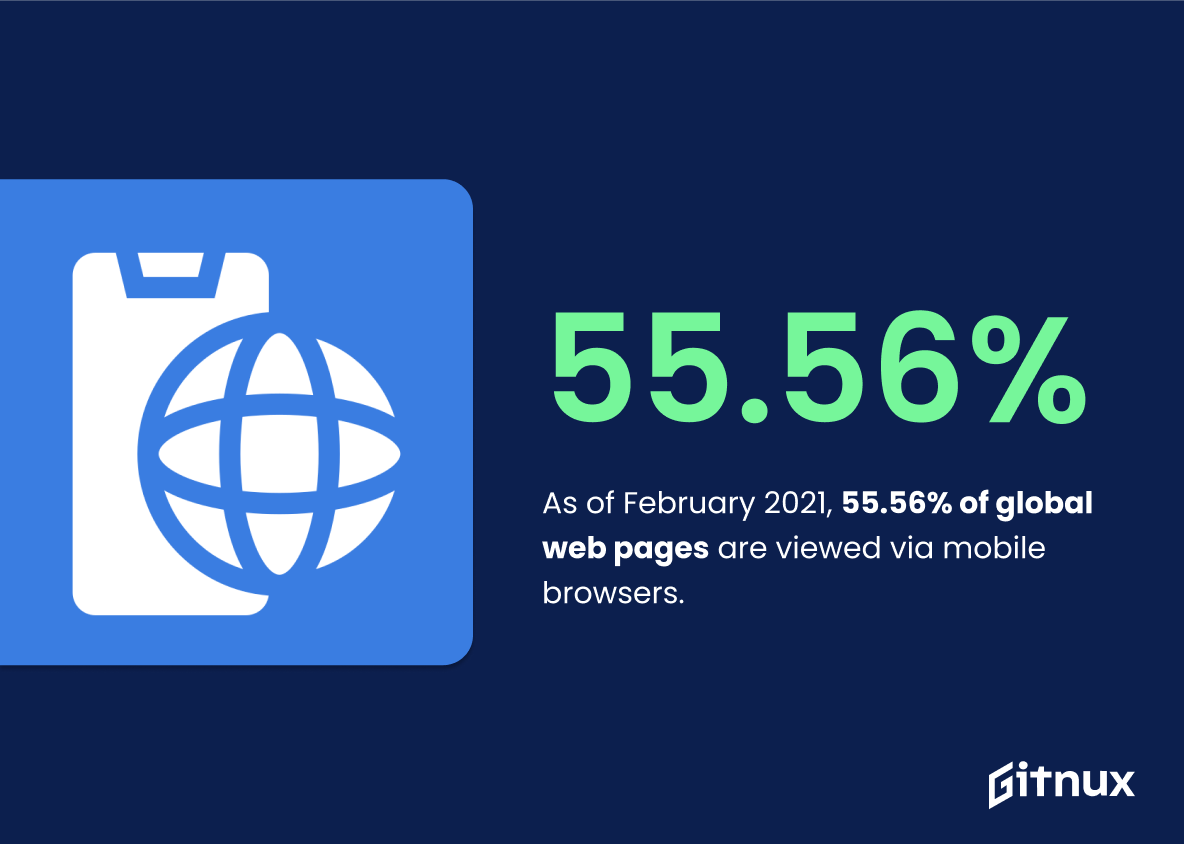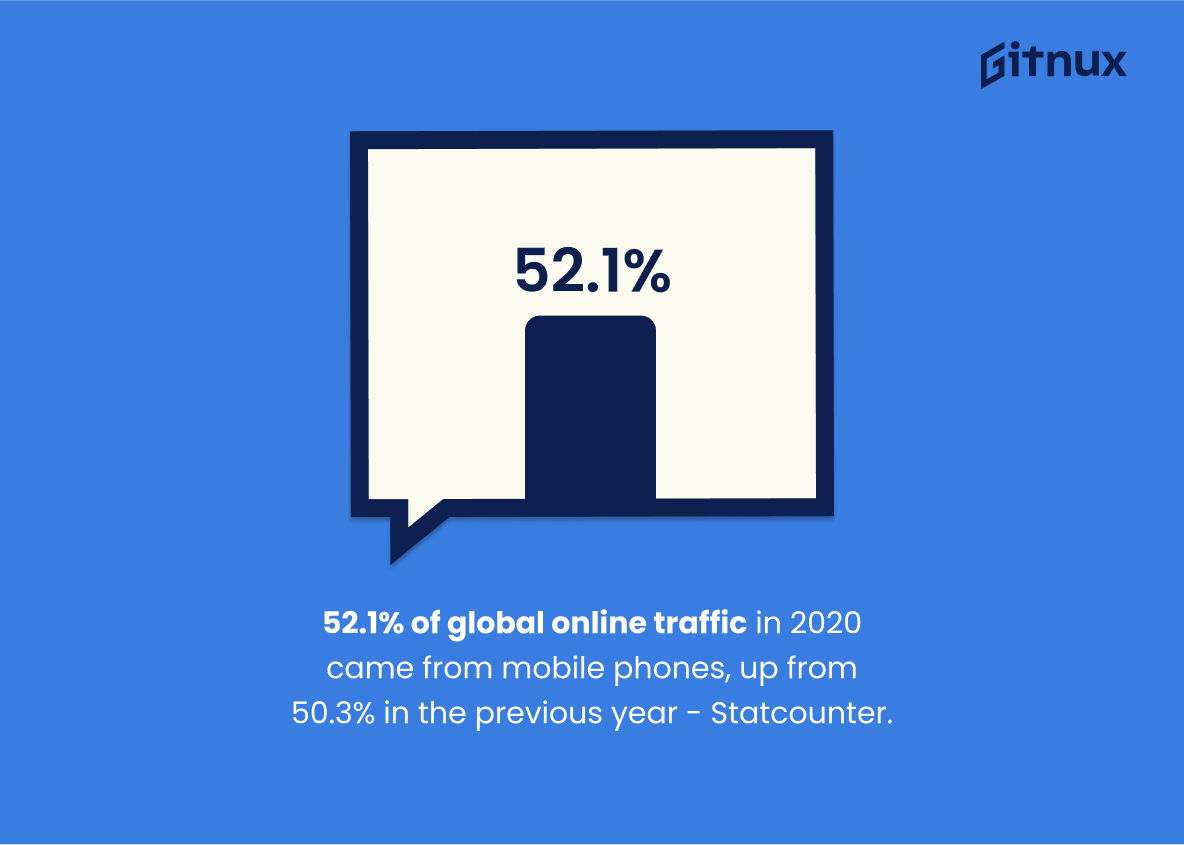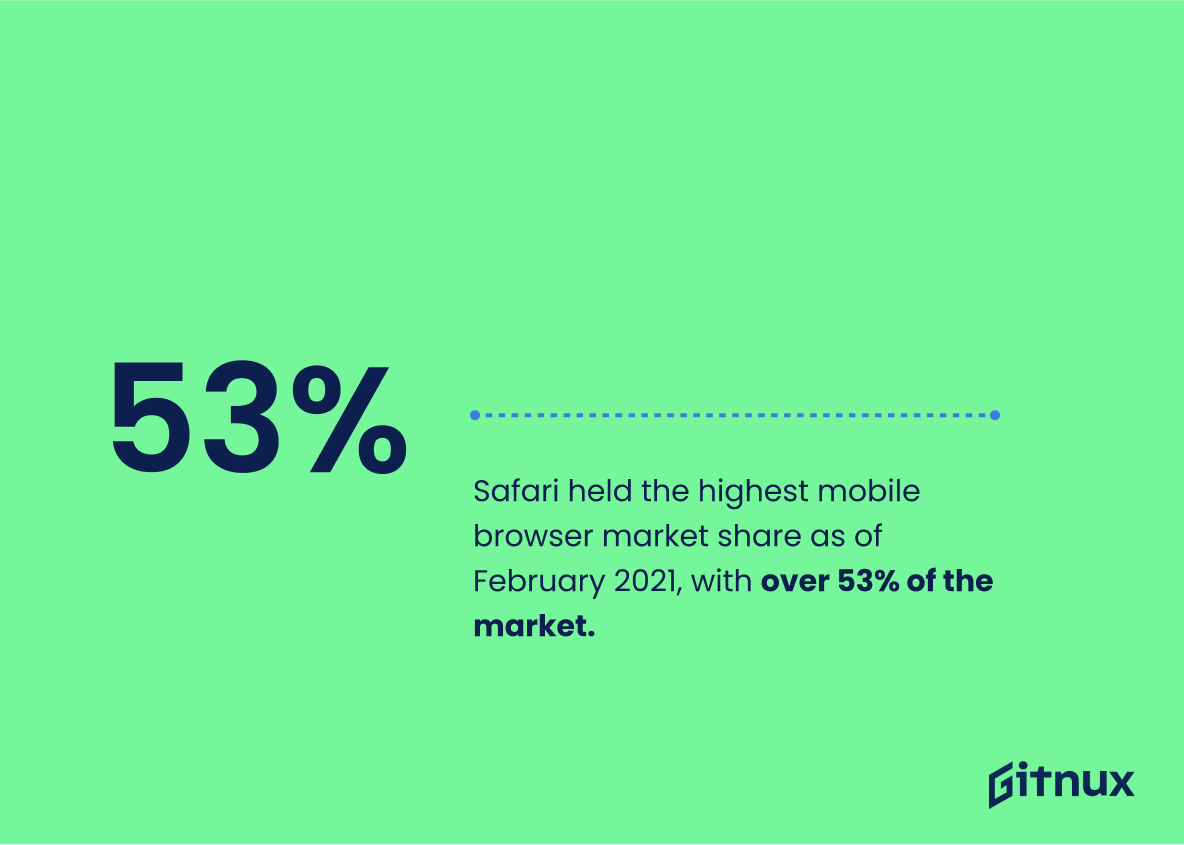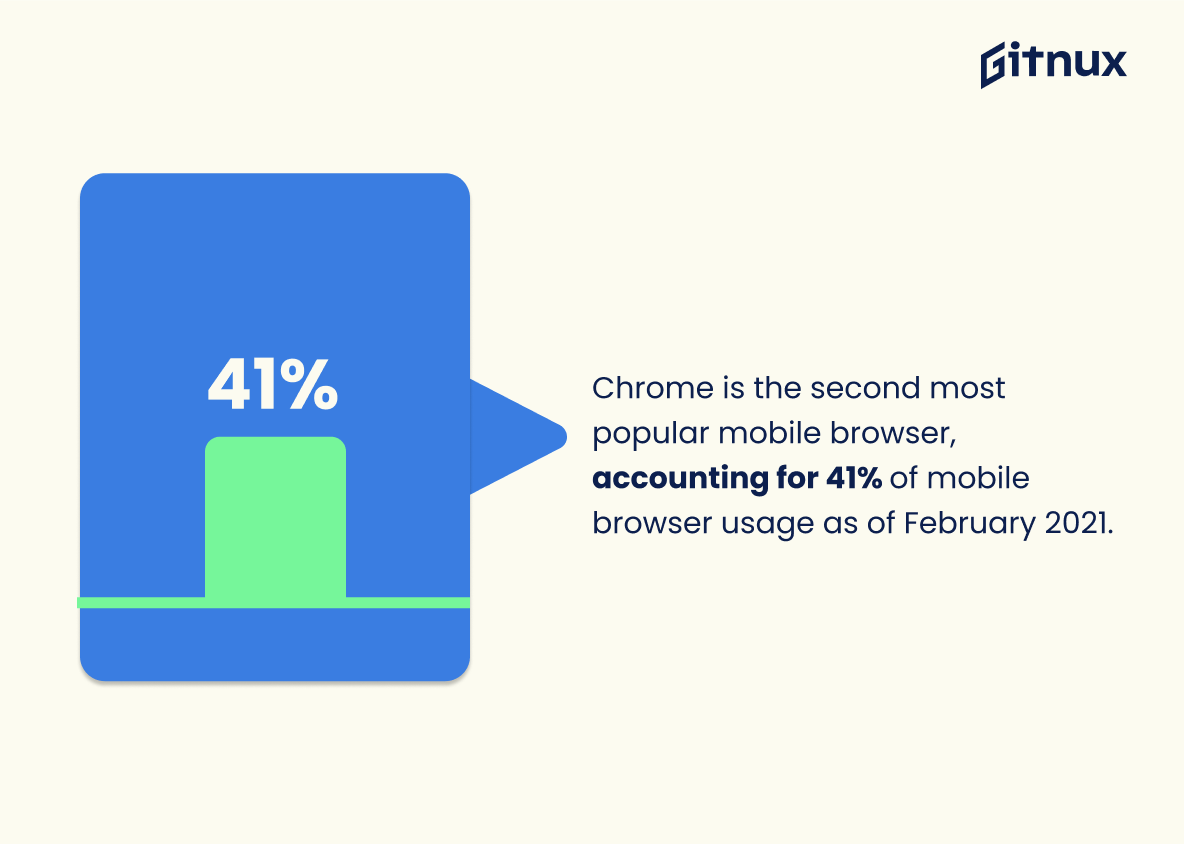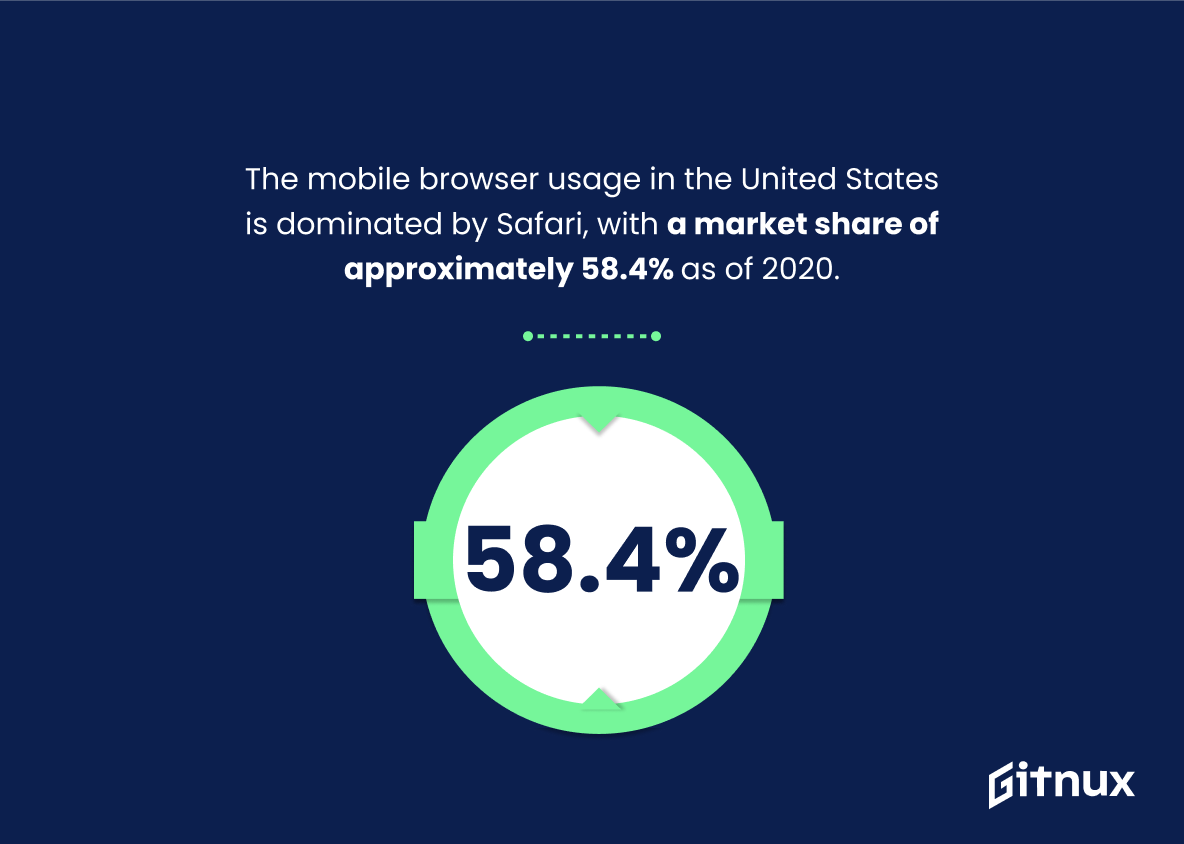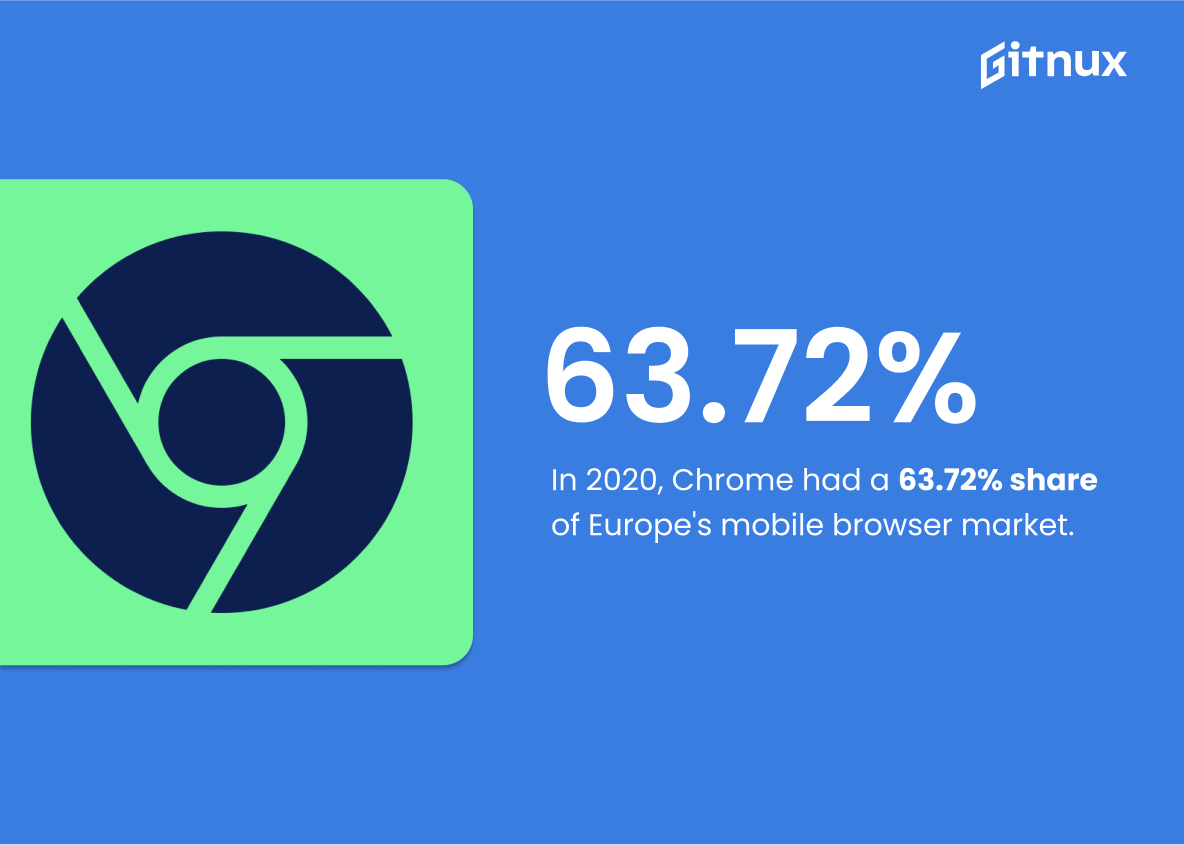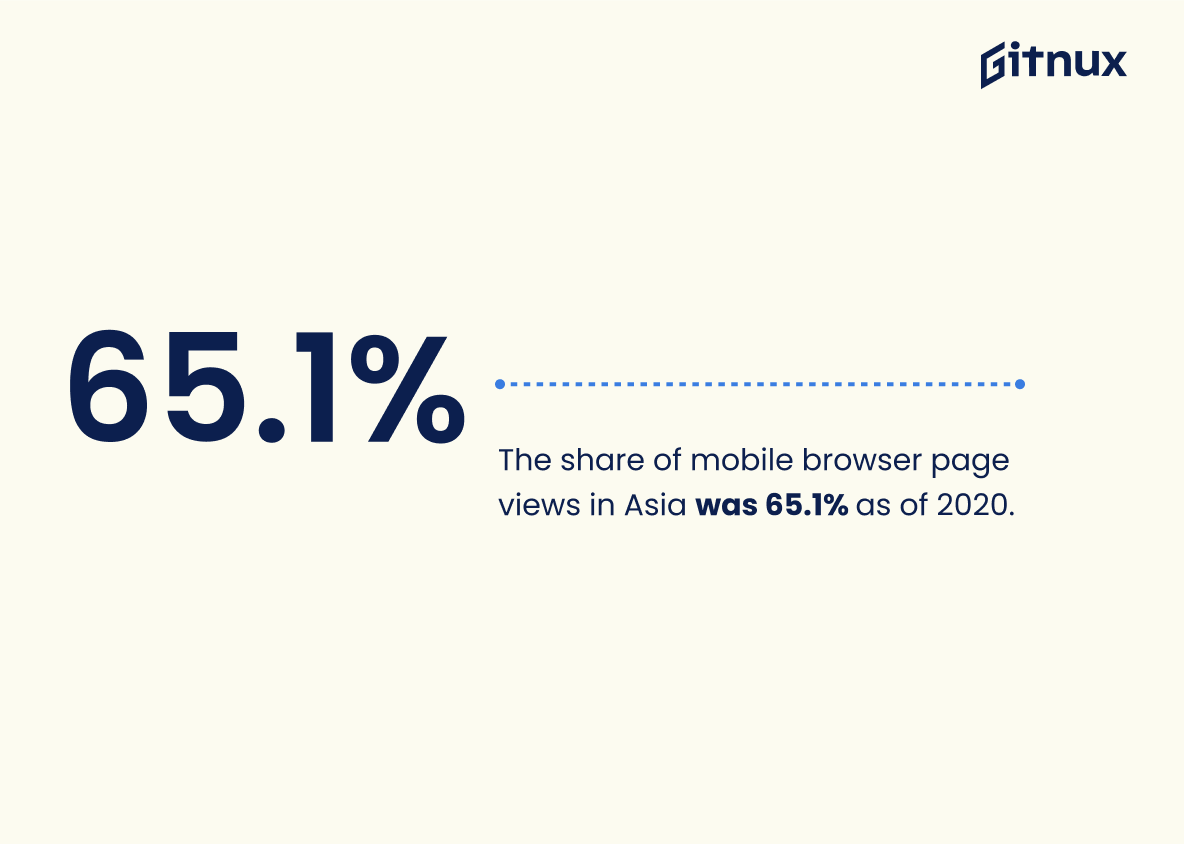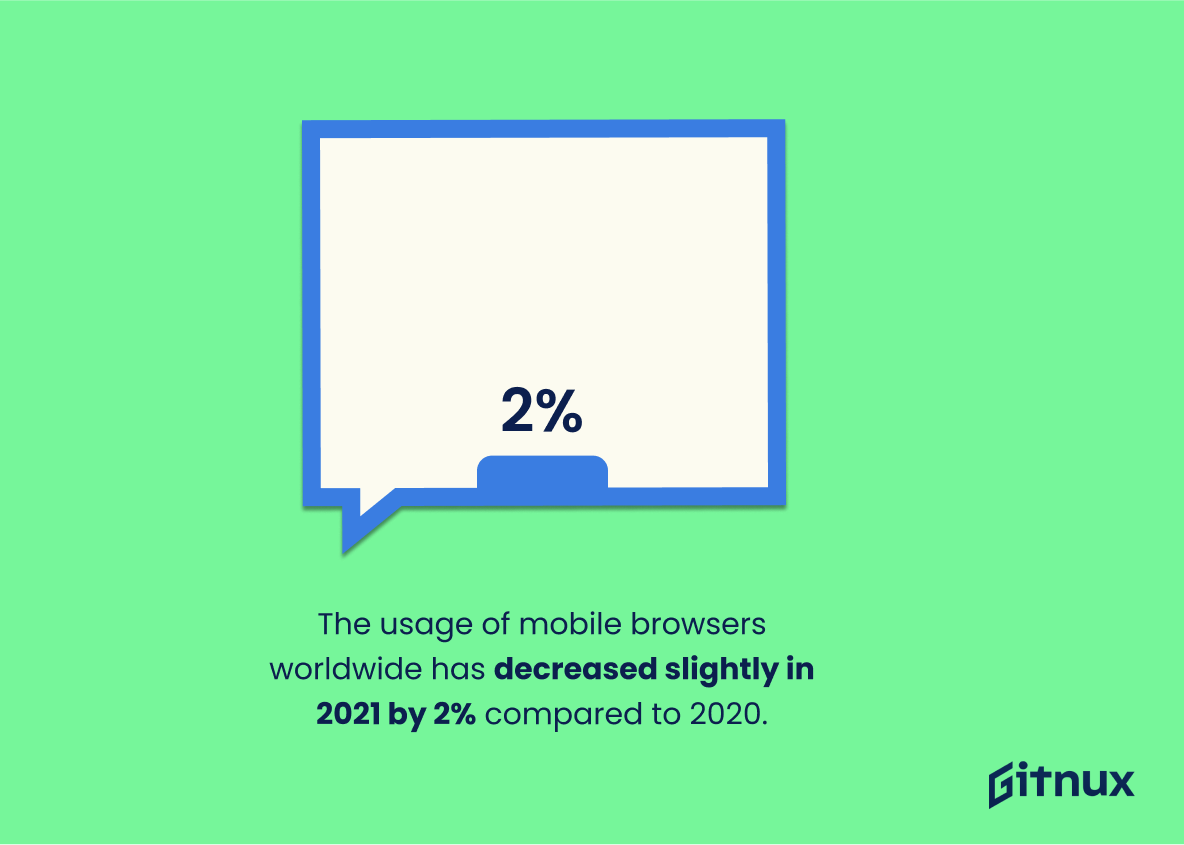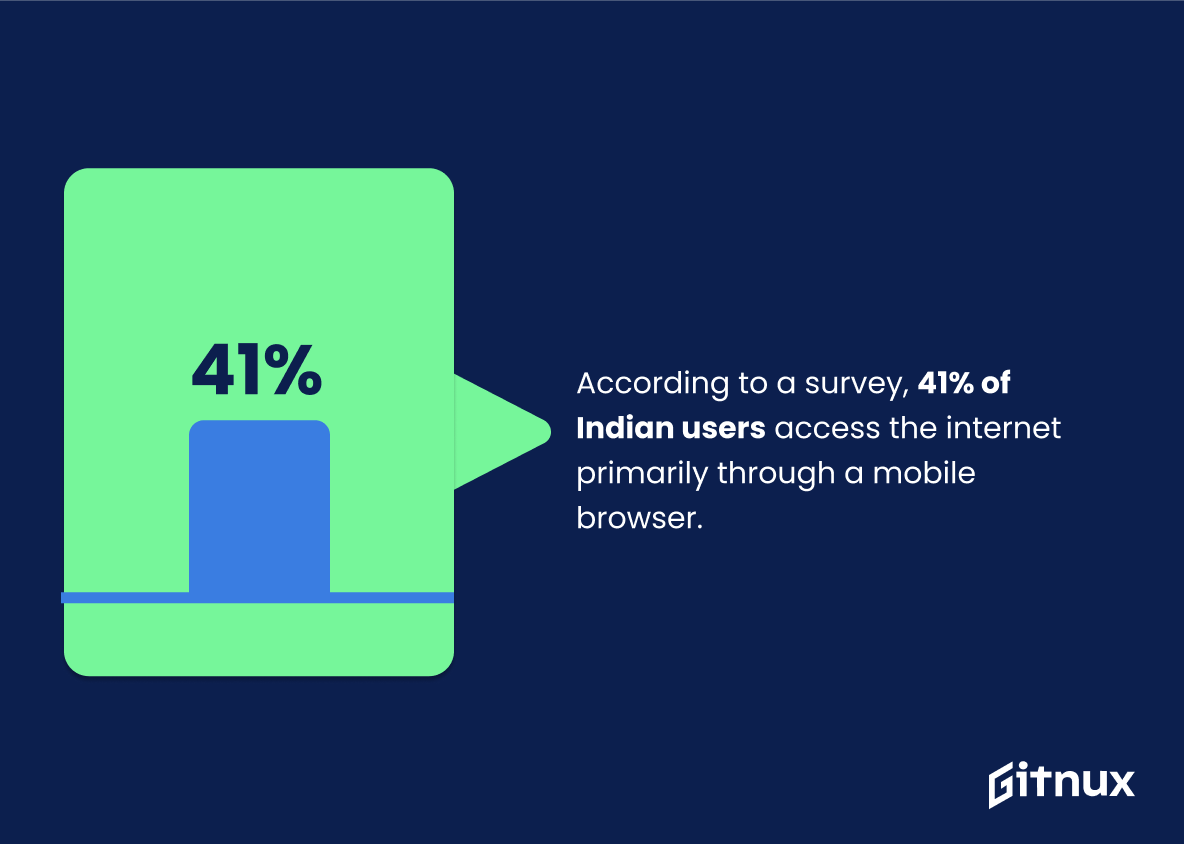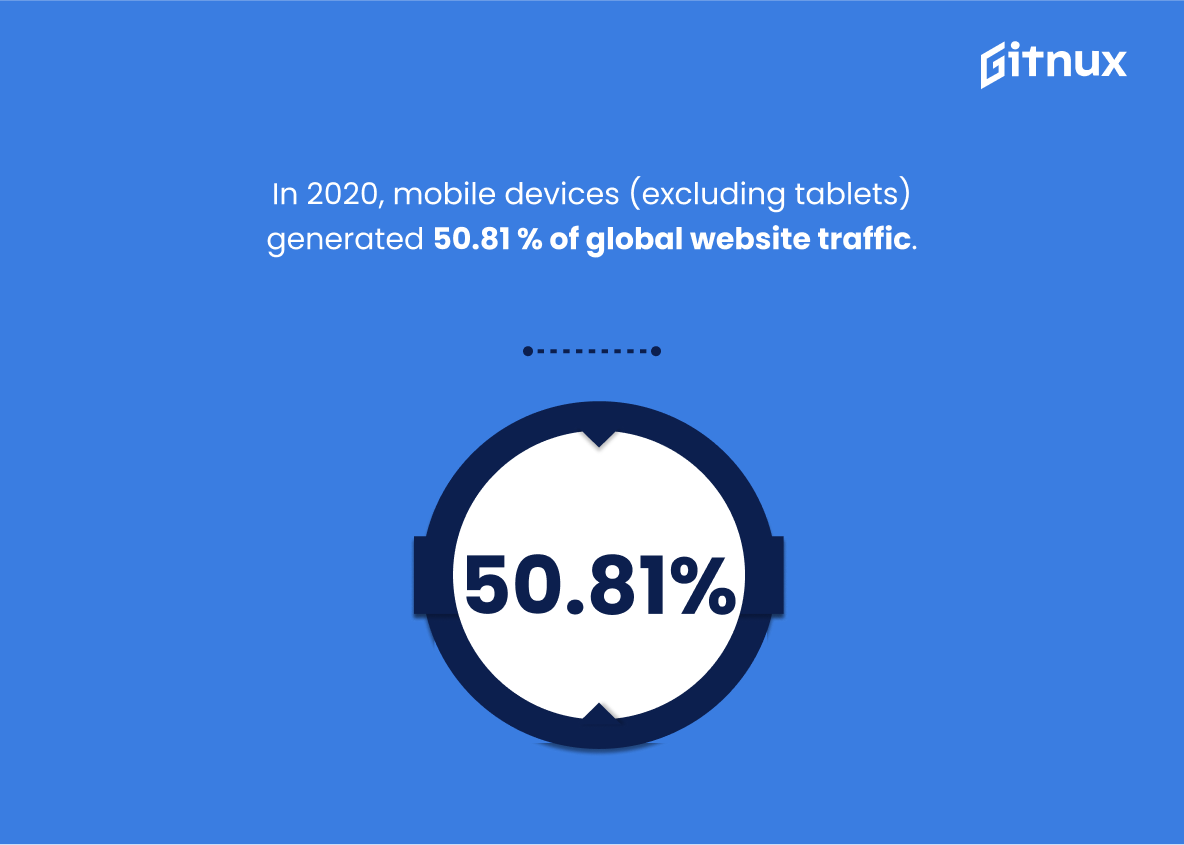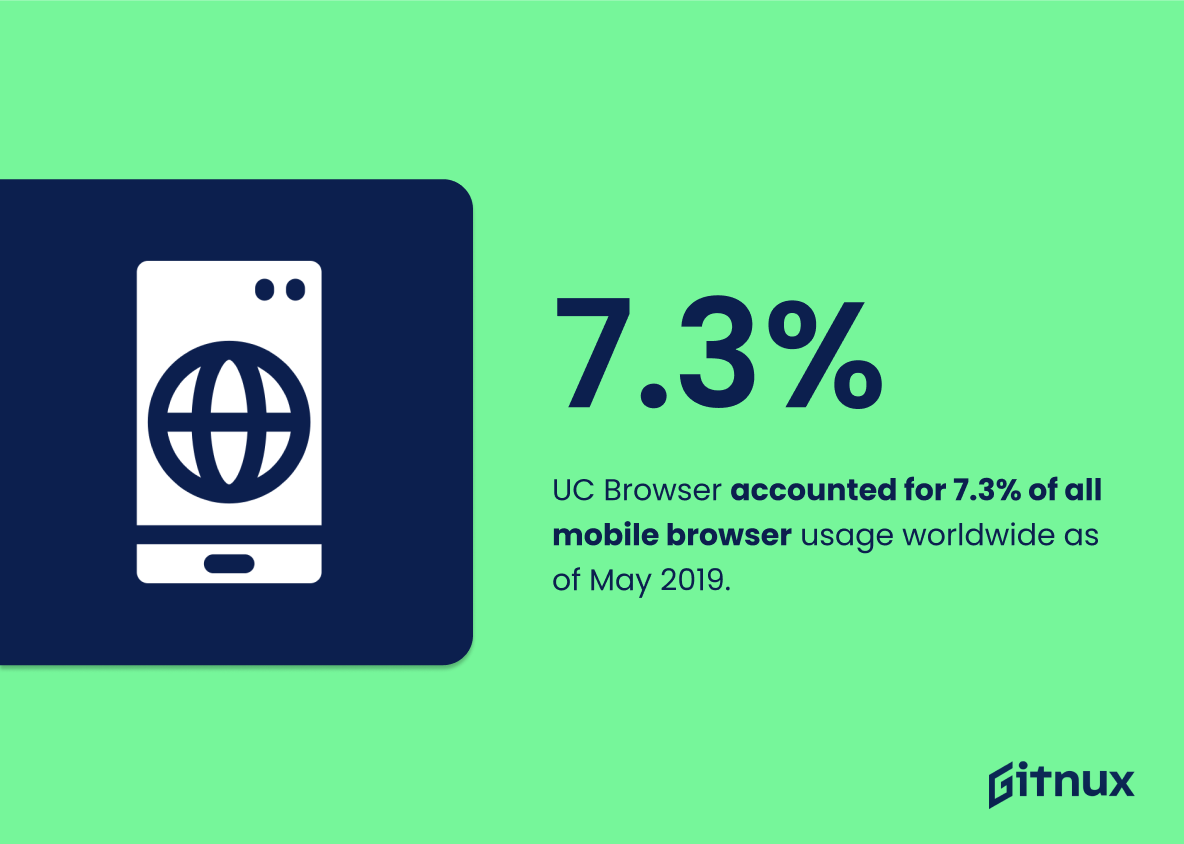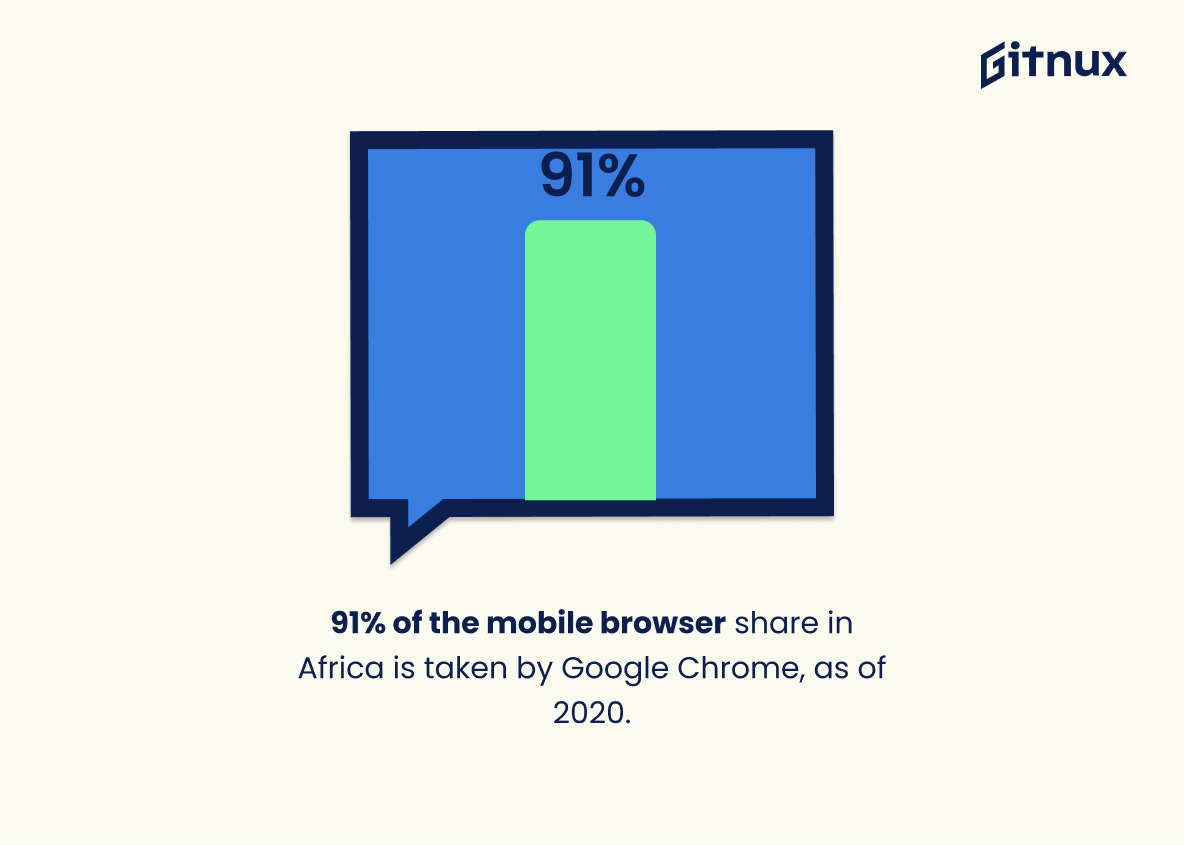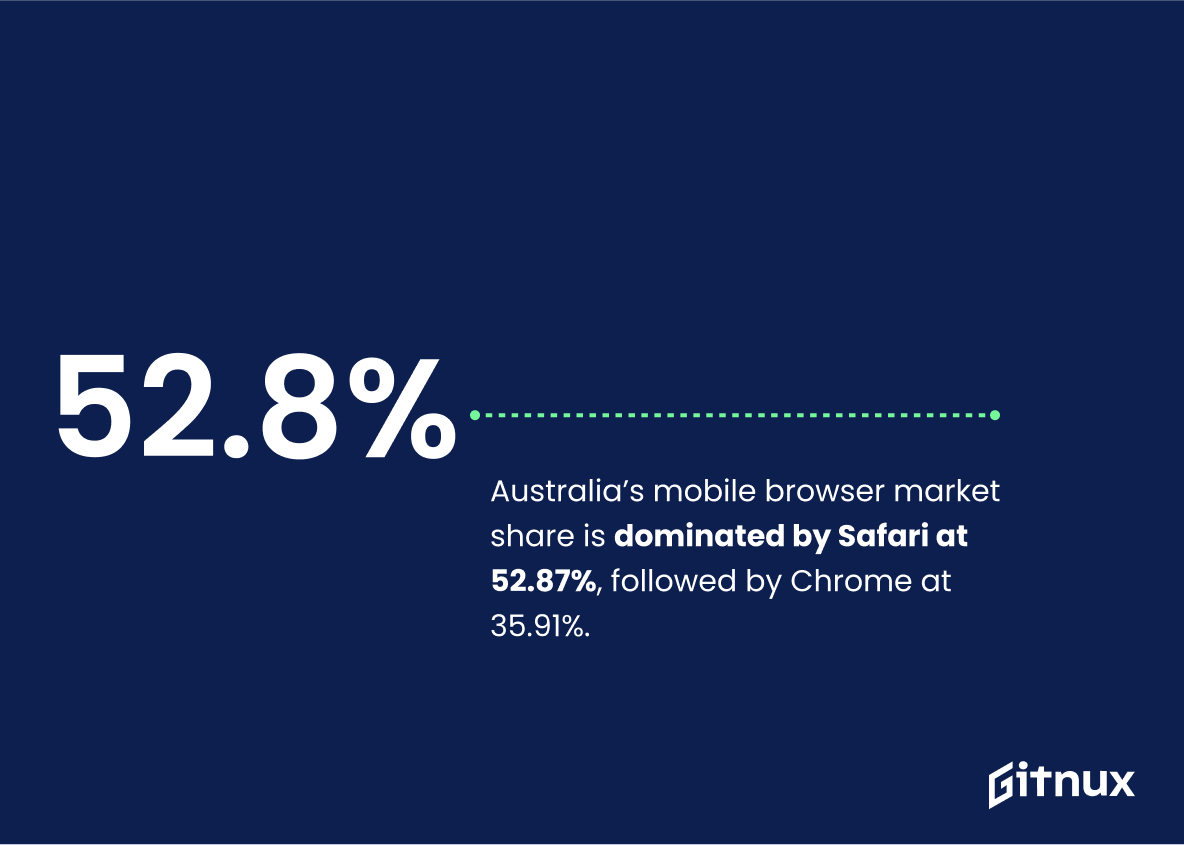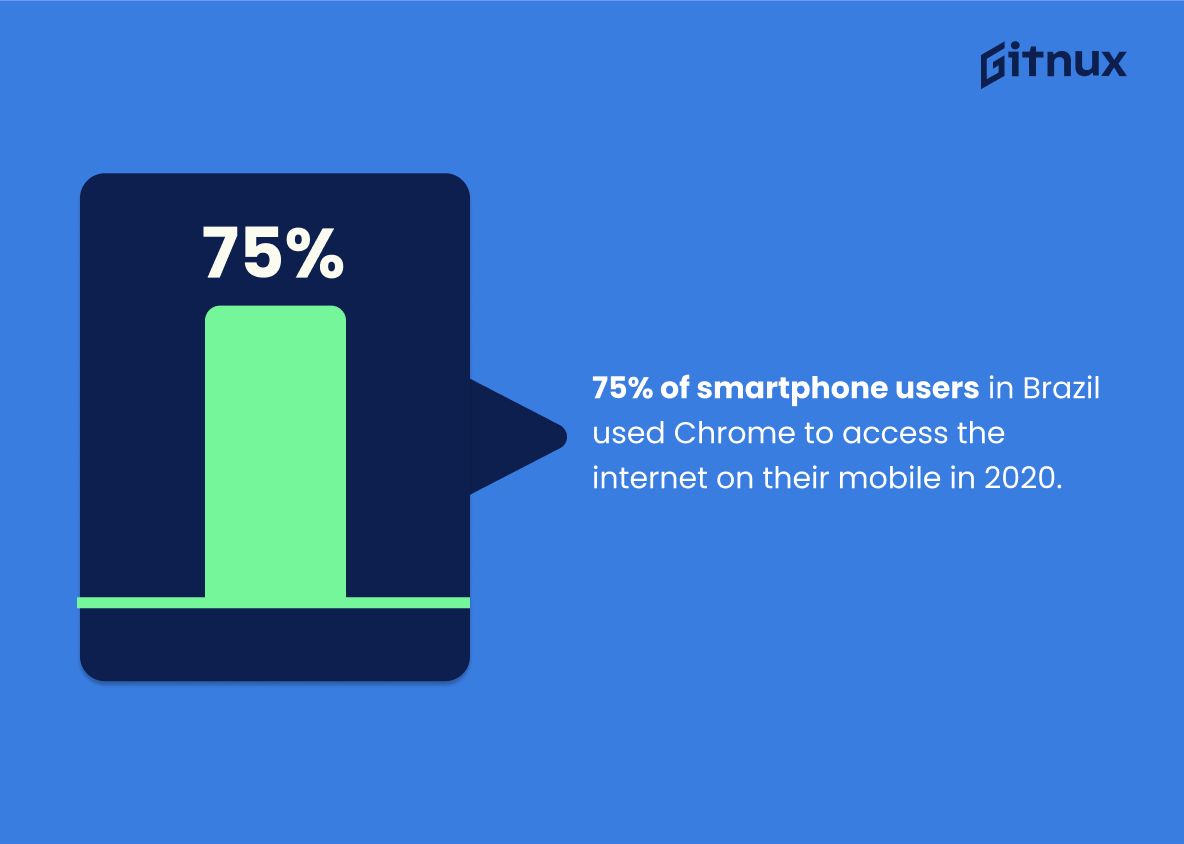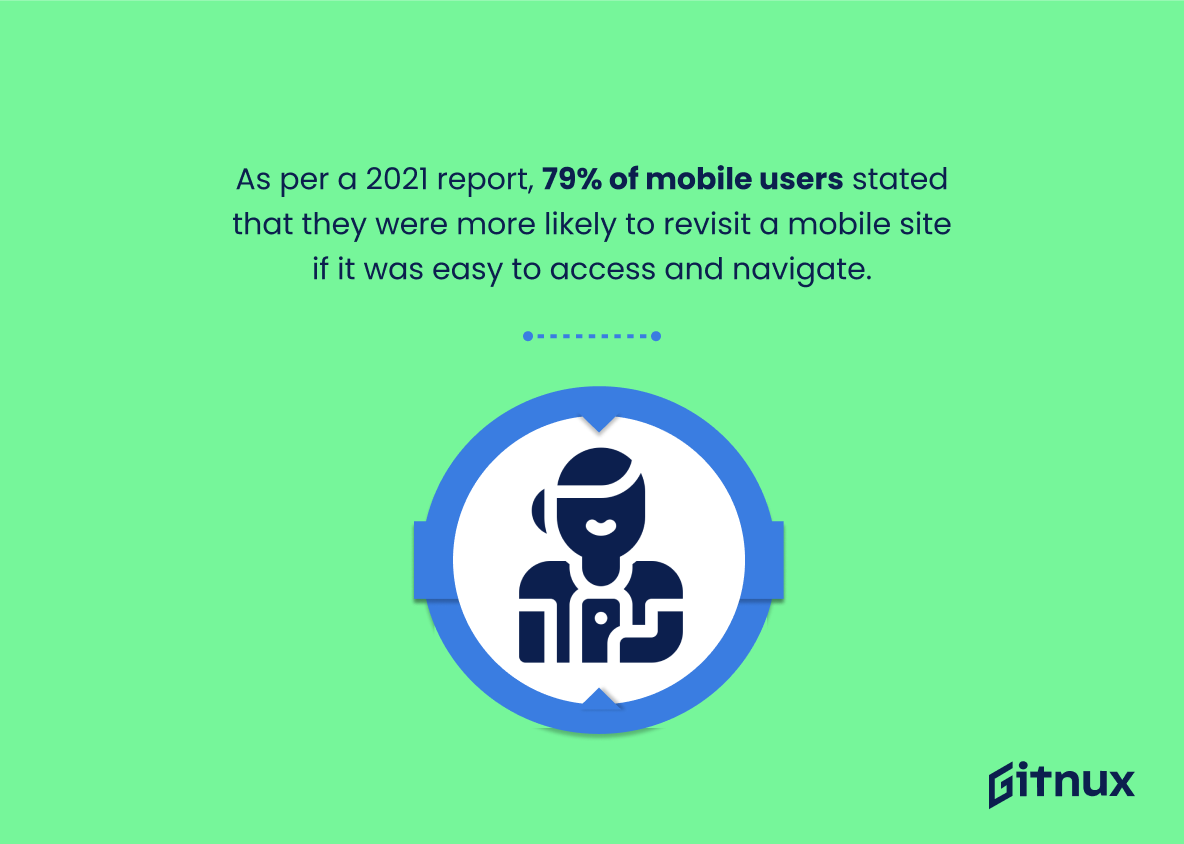In today’s digitally dominated world, smartphones have become integral, acting as our alarm clock in the morning, our GPS during travel, our social media hub and, of course, our portable web browser throughout the day. The advent of mobile technology has revolutionized internet accessibility, shifting it towards smaller screens. This blog post aims to delve into the intriguing world of mobile browser usage statistics. Here, we will examine the ever-evolving trends, the impact on web design and development, as well as the implications for businesses aiming to optimize their digital strategies. Stay tuned as we decipher the numbers, analyze the patterns, and project future trajectories in mobile browsing.
The Latest Mobile Browser Usage Statistics Unveiled
As of February 2021, 55.56% of global web pages are viewed via mobile browsers.
In the cyber world, where our digital footprints lie on every click, the statistic stating that as of February 2021, 55.56% of global web pages are viewed via mobile browsers is a silent testament to the seismic shift in browsing habits. This figures in a blog post about Mobile Browser Usage Statistics as an undisputed champion, dictating the direction of web design, advertising strategies, and content dispensation. The cyber realm has succinctly moved from the bulky desktop to the portability of the mobile screen, turning global viewing habits on their head. This statistic is a powerful gauge for predicting the future of digital media consumption and proves to the digital marketers where they should aim their strategies.
As per Statcounter, in 2020, 52.1% of all worldwide online traffic was generated through mobile phones, up from 50.3% in the previous year.
Highlighting such a profound percentage leap in mobile phone traffic underscores the rapidly growing dominance of mobile usage in the daily online experience. In the kaleidoscope of mobile browser usage statistics, this surge paints a dynamic and evolving picture of the digital landscape. In the cosmos of every byte and bit, this shift towards mobile-centric internet browsing illuminates the trajectories of both tech developers and content creators, orienting them towards a mobile-first approach. Therefore, when curating a blog post that delves into the depths of mobile browser usage statistics, such a seismic shift in user pattern cannot be overlooked.
Safari held the highest mobile browser market share as of February 2021, with over 53% of the market.
Grasping the power of Safari’s dominant position in the mobile browser landscape, controlling over 53% of the market as of February 2021, unfolds a deeper understanding for the blog post readers about Mobile Browser Usage Statistics. Its significant lead underscores Safari’s prevailing influence and reach amongst mobile users, forming a pivotal element of the broader narrative. This dominance can shape user experience trends, impact web design considerations, and influence marketing strategies in the mobile digital space. Therefore, comprehension of this compelling statistic is indispensable for decision-makers, marketers and developers to stay ahead or even shape the digital trends.
Chrome is the second most popular mobile browser, accounting for 41% of mobile browser usage as of February 2021.
Delving into the realm of Mobile Browser Usage Statistics, we uncover fascinating patterns. Notably, one cannot overlook the dominance of Chrome, holding on firmly as the second most popular mobile browser with a substantial chunk of 41% mobile browser usage as of February 2021. This information paints a vivid picture of Chrome’s influential role and prominent presence in the playing field. More so, it invites marketers, developers, and technologists to pay keen attention and strategize accordingly, keeping in mind this significant market presence of Chrome.
The mobile browser usage in the United States is dominated by Safari, with a market share of approximately 58.4% as of 2020.
Highlighting the sheer dominance of Safari in the realm of mobile browser usage in the United States, accounting for 58.4% of market share as of 2020, acts as a cornerstone to understanding the landscape of digital consumption in the nation. It portrays Safari’s ascendency as a key player and provides a critical insight for businesses and marketers aiming to optimize their digital strategies and improve web compatibility. Such an overwhelming majority of users on one platform signals the importance of tailoring web services and online content to be seamless on Safari. It’s not just a statistic, it’s a compass guiding the direction of digital innovation, usability, and outreach.
As of 2020, Google Chrome represented 63.72% of the mobile browser market within Europe.
Highlighting the dominance of Google Chrome with a substantial 63.72% hold on the mobile browser market in Europe underscores the towering influence of this browser in the digital world. In the realm of mobile browsing, this snapshot, taken from the year 2020, paints a vivid picture of browsing preferences, revealing a tilt towards Chrome amongst its European users. Developers, digital marketers, and individuals leaning towards mobile-based enterprises can harness this knowledge to optimize their websites and apps for Chrome, consequently enhancing user experience and accessibility. It’s a compass for those sailing in the digital ocean, guiding their way towards maximizing reach and impact.
The usage of mobile browsers worldwide has decreased slightly in 2021 by 2% compared to 2020.
When it comes to tailoring blog content towards Mobile Browser Usage Statistics, the slight 2% dip in worldwide usage of mobile browsers in 2021 compared to 2020 gives us fresh insight to mull over. It alerts us to a subtle shift in user behavior. This could spark discussions on the possible catalysts for this decrease. Are users migrating to apps instead of accessing web through browsers on their mobile? Or perhaps, are fewer people accessing the internet? Curious readers would also want to know if this trend is just a one-off slowdown or the beginning of a gradual decline. Ultimately, this little twist in browsing trend is an invitation to dig deeper and understand the complexities of mobile behavior in our increasingly digital world.
The share of mobile browser page views in Asia was 65.1% as of 2020.
Highlighting a figure like 65.1% mobile browser page views in Asia as of 2020 paints a vivid picture of the digital landscape in the largest continent. It underscores Asia’s established position at the forefront of the worldwide shift towards mobile internet browsing. In discussing mobile browser usage statistics, showcasing this data is pivotal. It serves as a concrete example of global trends leaning towards smartphones for online activities. This metric also potentially signals to blog readers, especially business owners and digital strategists, where their focus should be in terms of platform optimization, content creation, and advertising spends.
According to a survey, 41% of Indian users access the internet primarily through a mobile browser.
In the vast digital cosmos, India glows bright with an illuminating statistic where 41% of its users primarily explore the internet through a mobile browser. Delving deeper into this matrix, it provides a valuable perspective for our blog post about Mobile Browser Usage Statistics. The staggering proportion of mobile browser users in the subcontinent invites businesses, marketers, and developers to reevaluate their strategies, focusing their efforts on optimizing mobile browser interfaces and experiences to cater to this significant demographic. This statistical insight indeed reinvents the digital trajectory, reminding us that the future of internet is increasingly mobile in the Indian context.
In 2020, mobile devices (excluding tablets) generated 50.81 % of global website traffic.
Delving into the orbits of browsing data, there’s a cosmic shift that’s become impossible to overlook; as of 2020, mobile devices (excluding tablets) were behind a dominating 50.81% of global website traffic. This staggering revelation is the Big Bang in our discussion on Mobile Browser Usage Statistics. A number so powerful, it’s akin to a tidal wave ushering in a new era where the desktop dynasty has been dethroned, and the scepter now rests firmly in the grip of mobile browsing.
Just let that sink in – over half of the world’s Internet voyagers are now charting courses via mobile devices. It’s a wake-up call for bloggers, web designers, and businesses alike to prioritize their mobile interface, ensuring it’s sleek, streamlined, and sailing smoothly.
Our blog post is the star-studded sky map, guiding you through emerging trends and illuminating the mobile-dominated future path of browsing history. With such a significant demographic setting sail on the mobile browsing ship, it’s clear that those not on board risk sinking into the depths of digital anonymity.
UC Browser accounted for 7.3% of all mobile browser usage worldwide as of May 2019.
Rendering a fascinating insight, the revelation of UC Browser’s stake of 7.3% in worldwide mobile browsing as of May 2019 elucidates the diverse tableau of global browsing preferences. Converging to this statistic, one uncovers the vital inference of this lesser-known contender holding its own amidst the ubiquity of more dominant players in the mobile browsing world, such as Chrome and Safari. Accentuating a focal point of interest in a blog post about Mobile Browser Usage Statistics, this measure encourages readers to delve deeper into the characteristics and attributes of UC Browser that appeal to a considerable user base globally. Consequently, this aids understanding of the eclectic dynamics and competition in the mobile browser market.
91% of the mobile browser share in Africa is taken by Google Chrome, as of 2020.
Understanding the dominance of Google Chrome, with a commanding 91% share of mobile browsing in Africa as of 2020, paints a vivid picture of browsing habits in the continent. It serves as a strong indicator of the popular preference for Google’s browser, which may have significant implications for web developers, digital marketers, and content creators tailoring their work for the African market. This dominance could affect design considerations, compatibility requirements, and even SEO strategies. In essence, Google Chrome’s mammoth share of the browser pie in Africa is an important compass directing the focus of any digital strategy. With this knowledge, businesses can streamline their efforts to cater more effectively to their target audience, potentially yielding better engagement and results.
Australia’s mobile browser market share is dominated by Safari at 52.87%, followed by Chrome at 35.91%.
Unraveling these numbers, we dance into a deeper understanding of Australia’s digital ecosystem. A browser showdown reveals that Australia’s mobile browsing arena is stolen by none other than Safari, clinching a hefty 52.87% of the market share. The figure is an eloquent testament to Apple’s deep, pervasive reach down under, a fact buoying the articulation of Apple-optimized content and web development strategies that cater to Safari’s specificities.
Barely missing the crown, Google Chrome emerges as the runner up, latching onto 35.91% of the market share. An apparent indicator, it radiates the symbiosis between android users and Chrome, making a compelling case for ensuring website compatibility with Chrome and optimizing for Google’s algorithm. With these figures interlaced into the broader tapestry of Mobile Browser Usage Statistics, we unlock more refined, targeted strategies to engage digitally with Australians on their mobiles.
75% of smartphone users in Brazil used Chrome to access the internet on their mobile in 2020.
In the lush tapestry of mobile browser usage statistics, the vibrant thread representing the 75% of smartphone users in Brazil who utilized Chrome for their internet access in 2020 intertwines crucial insights. First, it authentically exhibits the dominant influence of Chrome in the Brazilian digital ecosystem, informing market strategists about the inherent preference of users for software diversity and reliance on Google products.
Moreover, from a broader perspective, it intimately relates to the world of app developers, accentuating the prime importance of ensuring seamless compatibility of their products with Chrome to tap into this massive user base. Additionally, it nudges businesses and online advertisers towards prioritizing Chrome to enhance visibility and connect effectively with their Brazilian audience.
Lastly, it echoes the dynamic shifts in global digital trends, unravelling how localized browser preferences can influence internet accessibility, site analytics, digital marketing strategies, and even the future trajectory of technological advancements. Thus, this statistic weaves a compelling narrative on the impact of a browser’s popularity on a variety of digital spheres, making it a key protagonist in a blog post about Mobile Browser Usage Statistics.
As per a 2021 report, 79% of mobile users stated that they were more likely to revisit a mobile site if it was easy to access and navigate.
Delving into the marrow of mobile usage statistics, we find a riveting jewel polished by the sands of data gathering. The 2021 report reveals that 79% of mobile users resonate favorably with mobile sites offering seamless access and convenient navigation. In the online sphere, this propensity to revisit a user-friendly mobile site presents a golden key, unlocking profound insights and strategic implications.
In the digital cosmos of a blog post about Mobile Browser Usage Statistics, this captivating detail operates as the North Star, guiding the course and content of the conversation. It underlines the vital intersection of user behavior with the digital environment, spotlighting the increasing demand for simplified interface and user-friendly mobile interactions.
This digital nugget does more than just illuminate—it acts as a compelling call to web developers, digital marketers, and designers alike. It pushes for a more profound understanding and mastery of website design optimization in the context of mobile browsers. It fundamentally challenges how we perceive, understand, and cater mobile users’ needs and preferences. Therefore, it holds an impressive potential to shape future digital landscapes, making it an indispensable piece in the puzzle of Mobile Browser Usage Statistics.
Conclusion
In an age where the utilization of mobile devices consistently exceeds that of desktops, recognizing and understanding the trends of mobile browser usage statistics is paramount. Whether you’re an app developer, a digital marketer, a web designer, or just a tech enthusiast, these insights are key to navigate this ever-expanding digital landscape. With the rise of mobile-first indexing and the increasing dominance of mobile searches, equipping yourself with these comprehensive statistics enables you to optimize your strategies, elevate user experience, and drive more conversions. Let’s not forget, this is a constantly evolving sphere, and staying updated with the latest data of mobile browser usage is your ticket to a strong digital presence, today and tomorrow.
References
0. – https://www.www.thinkwithgoogle.com
1. – https://www.gs.statcounter.com
2. – https://www.www.statista.com
3. – https://www.www.w3counter.com
